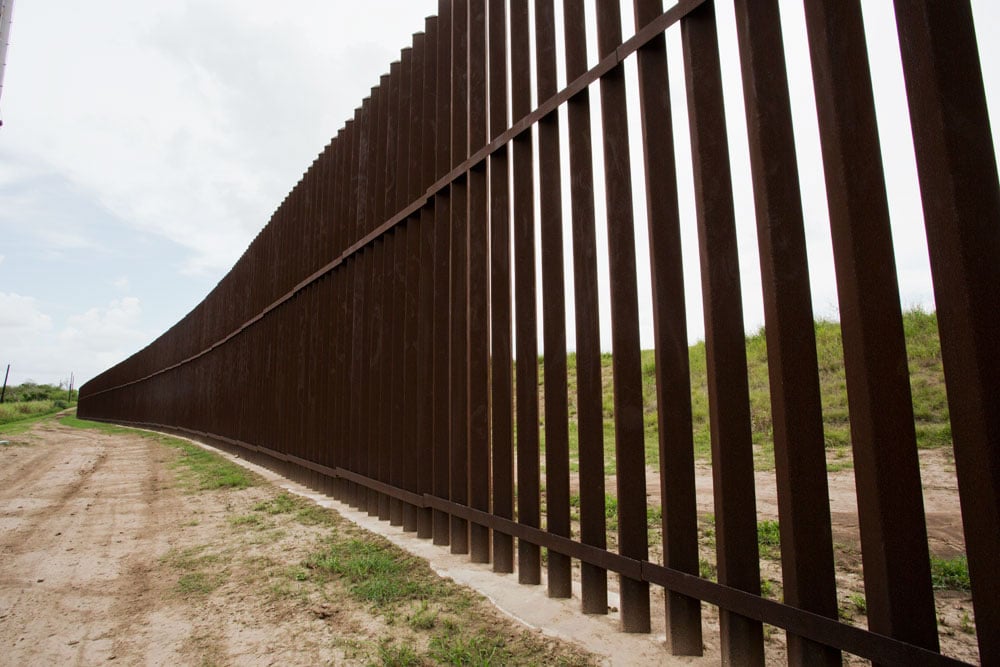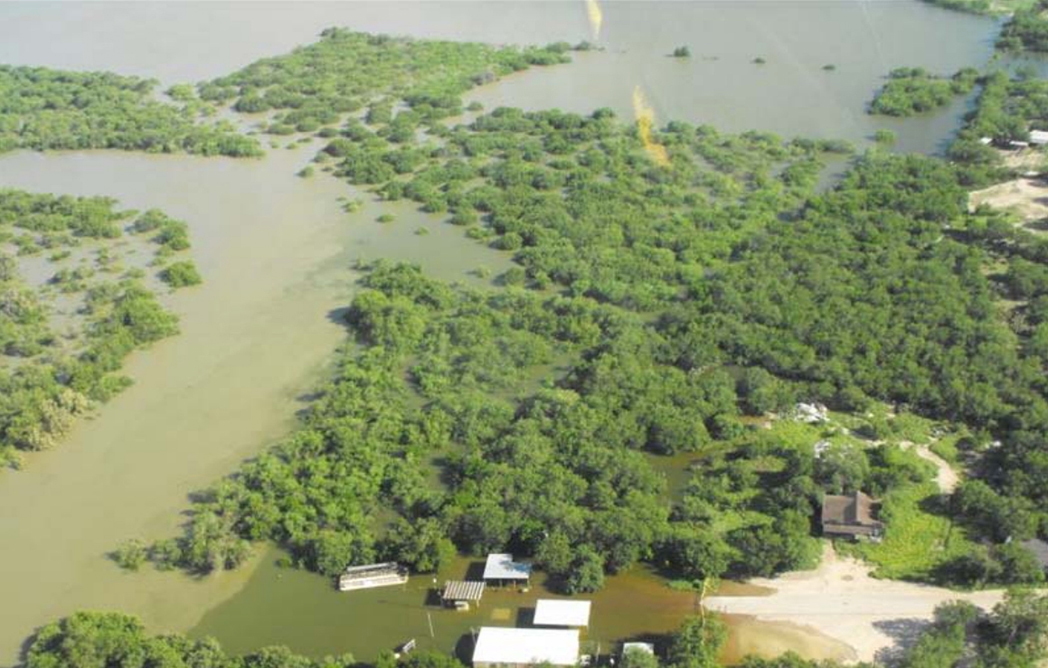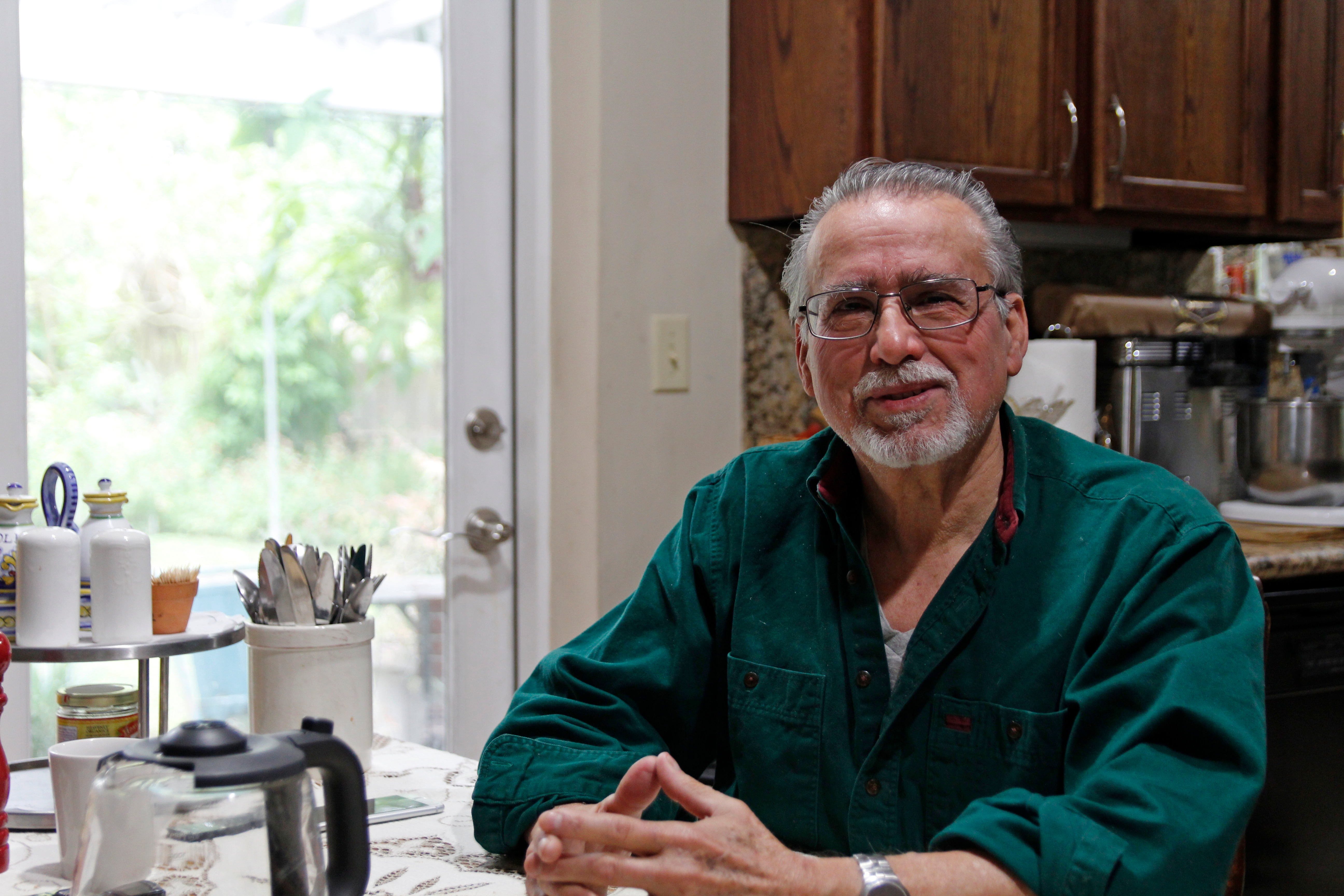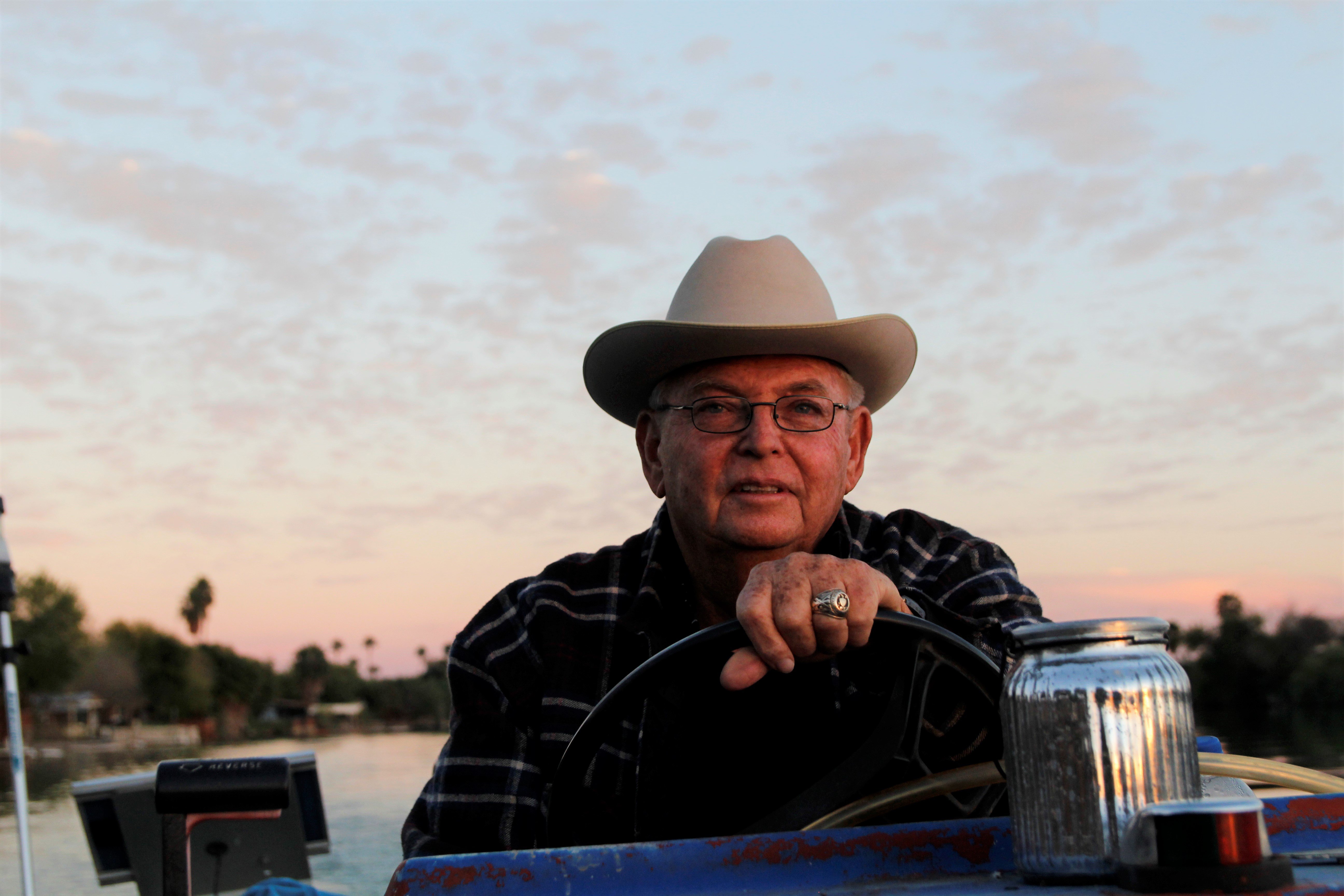
‘We Build the Wall’ Lands in South Texas, Vilifies Priest and Butterfly Refuge
Accusing a priest of supporting human trafficking and a nature center of butterfly-smuggling is one way to make friends when you’re the new kid in town.

A nonprofit dedicated to carrying out President Donald Trump’s vision of a border wall has arrived in South Texas. The group, We Build the Wall, plans to use private funds to erect a 3-mile stretch of 18-foot steel fence on the property of a sugarcane farmer in Hidalgo County. As plans move forward, the outfit’s founder has spread misleading claims on social media about a local priest and nearby nature preserve—part of a trend of conflicts between the nonprofit and the border communities it operates in.
Last week, We Build the Wall—which has the support of former Trump strategist Steve Bannon and Kansas politician Kris Kobach—announced they were clearing land for the fence next door to the National Butterfly Center, a well-known nature preserve whose director has been an outspoken critic of the wall. A local reporter—along with the butterfly refuge’s director, Marianna Treviño-Wright, and Father Roy Snipes, a local Catholic priest—took to the Rio Grande in Snipes’ boat to pass by the farm and film the cleared land. In the video, Treviño-Wright referred to the group as “fraudsters,” and Snipes voiced a general distaste for the border wall. Since then, We Build the Wall’s Florida-based founder, veteran and conservative activist Brian Kolfage, has lashed out.
In an interview with right-wing news outlet The Rundown, Kolfage smeared Snipes, a beloved figure in the border town of Mission known for his love of Lone Star beer and vocal defense of a historic chapel threatened by Trump’s wall. “[Snipes] is promoting human trafficking and abuse of women and children,” Kolfage said, referring to the priest’s criticism of border fences. “Instead of driving around in expensive boats with media he should be helping … to combat the rampant pedophilia in the church.” Since Friday, Kolfage has also tagged the butterfly center in about 30 tweets, accusing the refuge of assisting the cartels, implying it has ties to insect smuggling, and labeling the center “left wing thugs with a sham butterfly agenda.” (The center, for its part, has been lambasting Kolfage as well, sometimes including the hashtag “#LiarLiarPantsOnFire.”)
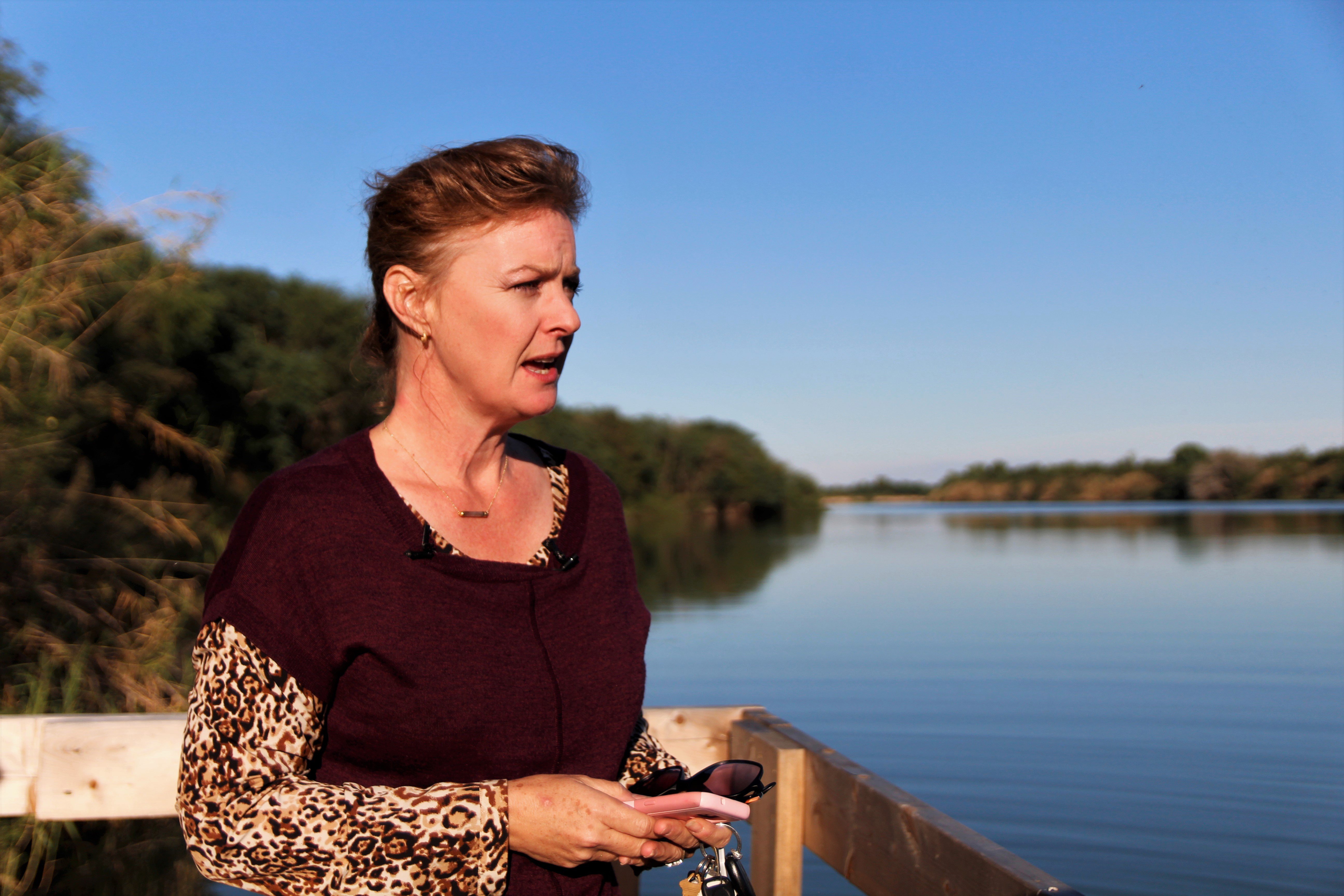
Bob Crane, a spokesperson for the butterfly center, told me in a statement that the claims were “a pack of lies, the same kind of thing as Pizzagate.” Reached by phone, Snipes said it’s clear that Kolfage is “not from around here. … Our neighbors know we don’t do things like that, and we do disagree but we usually disagree without being very mean and nasty.”
For Kolfage, online flame wars are nothing new. The Hidalgo County fence is We Build the Wall’s second borderlands project. Earlier this year, the nonprofit built a half-mile stretch of wall in Sunland Park, New Mexico. City officials there balked—the group hadn’t obtained the proper permits—and federal officials were equally salty when We Build the Wall constructed a gate on property owned by the International Boundary and Water Commission (IBWC).
Upset with the city and the IBWC, Kolfage went on the offensive. He repeatedly accused the city of being in league with Mexican criminal organizations bent on stopping the border fence. “What cartel paid off the Sunland Park City officials to lie and shut down our wall project?!” he tweeted in May. At We Build the Wall’s urging, the group’s supporters inundated city officials with calls and emails, many of which included racial slurs and death threats. Similarly, when an IBWC spokesperson criticized Kolfage’s group, he called her “a thug probably getting kickbacks from Sinaloa.”
Despite lacking proper permits, the New Mexico wall was successfully built—though the IBWC keeps the gate open during the day.
We Build the Wall faces different construction challenges for its South Texas fence. Though the nonprofit is funding the operation, the engineering and construction is being done by Fisher Industries—the North Dakota-based firm that President Trump unsuccessfully tried to steer border wall contracts to after its CEO appeared on conservative media saying he could build the wall faster and cheaper than others.
Reached by phone, Greg Gentsch, an engineer for Fisher, told me the new wall will be built about 30 feet from the Rio Grande’s bank, placing it well within the floodplain. Stretches of border wall have collapsed during floods in Arizona, and federal engineers in the U.S. and Mexican governments have warned that a fence in the floodplain could worsen flooding on either side of the border. In 2008, the Bush administration bought riparian land in Starr County for a wall, but the property vanished into the river during a 2010 flood. The government plans to build Trump’s wall in Hidalgo County along an existing levee, outside the floodplain, but the project is months behind schedule and the feds have only broken ground on one small stretch.
“Our neighbors know we don’t do things like that, and we do disagree but we usually disagree without being very mean and nasty.”
A pair of international treaties, enforced by the IBWC, forbid the United States and Mexico from building structures that would flood the other nation, or shift the border by altering the Rio Grande. Gentsch assured me that the new fence—which will have roughly five-inch gaps between fence posts to let water pass—won’t violate the treaties or collapse during a flood. But some are skeptical.
“If their wall goes up beside the Rio Grande, it will dam water, it will likely collapse and be swept away and the resulting tangle of twisted bollards will put lives and property downriver at risk,” said Scott Nicol, a McAllen-based Sierra Club activist and researcher. “Their publicity stunt could kill people.”
On Tuesday, Gentsch said he was working on a flood assessment to submit to the IBWC, and that Fisher would wait for approval before starting construction of the fence, something the IBWC requested in a letter last week.
Because the government plans to build its wall in a different location, and because Congress has prohibited construction on the butterfly refuge, it seems likely the new private wall will stand isolated—what Treviño-Wright called, in last week’s video, a 3-mile “monument to stupidity.” Customs and Border Protection (CBP) did not respond to requests for comment for this story. But on Wednesday, El Paso’s Border Patrol Sector chief lauded the private wall in New Mexico, calling it “very effective.” The new acting secretary of Homeland Security, Chad Wolf, also said he “welcomed” private help.
In a phone call Tuesday, Kolfage said his group is not officially working with CBP but talks to the agency “through backchannels.”
Kolfage told me he doesn’t believe the people he’s targeted online actually work with the cartels; rather, he thinks their anti-wall views “enable” the criminal organizations. Kolfage—who has reportedly been involved previously in fake news operations and controversial fundraisers—defended his tweets, saying it’s his organization that has been smeared.
“I’m usually just responding to bad things that are put out about us,” he said, such as allegations of fraud. He added that it wasn’t a calculated choice to put the new wall next to the butterfly center and that “we’re not trying to come into these communities and wreak havoc.”
Kolfage also admitted to never having met Treviño-Wright or Snipes, who are both well-known in their community. If he had, perhaps he would’ve changed his mind about building a wall between a nature refuge and, downriver, the property of a family that’s called the border home since the time of Spanish land grants. At minimum, he might’ve gotten one thing right: Snipes’ boat, which Kolfage called “expensive,” is over 50 years old—plus he got it for free.
Read more from the Observer:
-
I’ve Lived in East Austin for 60 Years, and I Don’t Recognize it Anymore: As gentrification reshapes my neighborhood, I fear we’re losing something of real value to our city.
-
Driving My Life Away: As physicians leave small towns, rural Texans must travel farther and farther for health care.
-
John Cornyn’s Weaselly Immigration Record: How to say one thing and do another.
